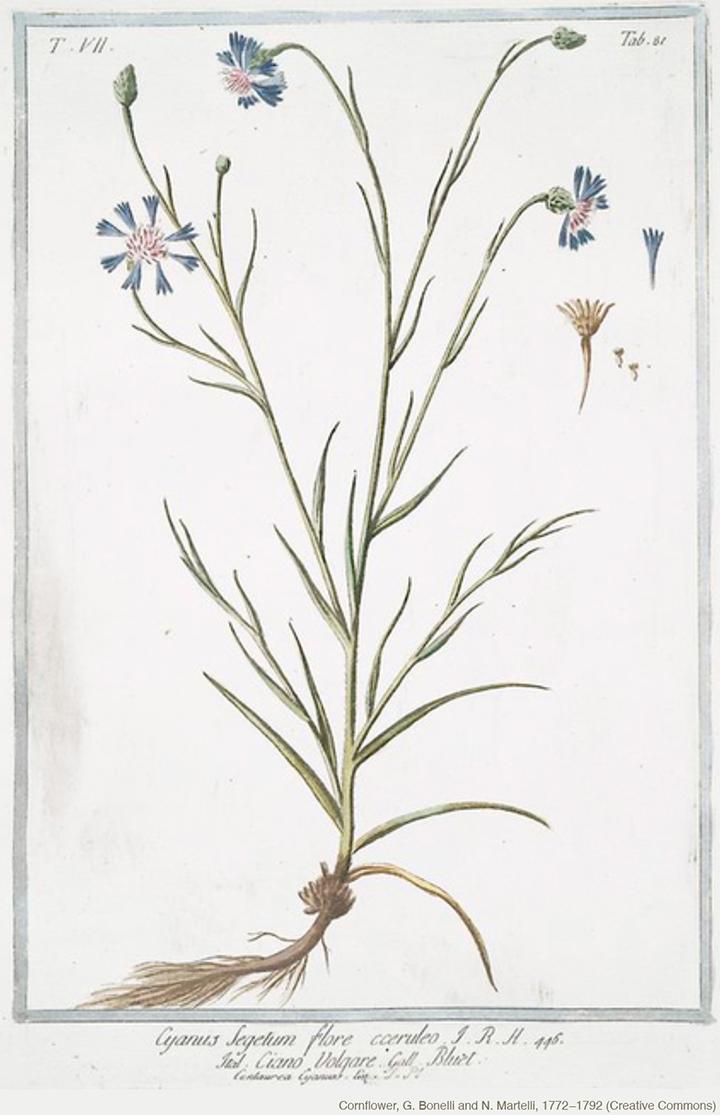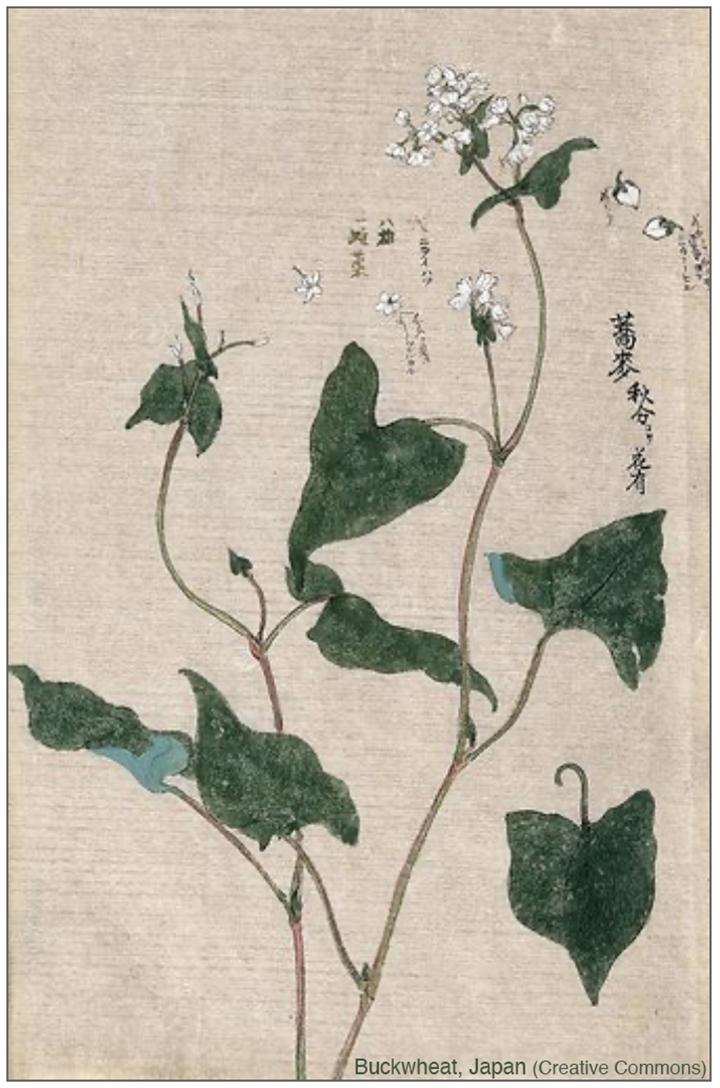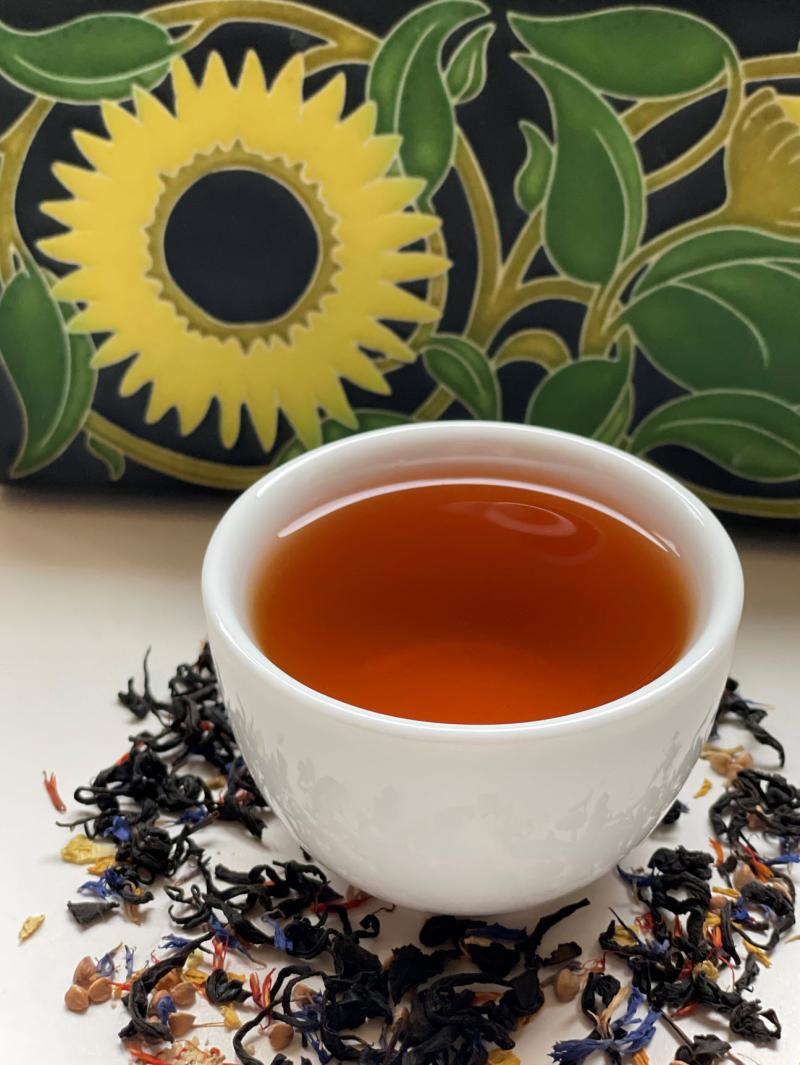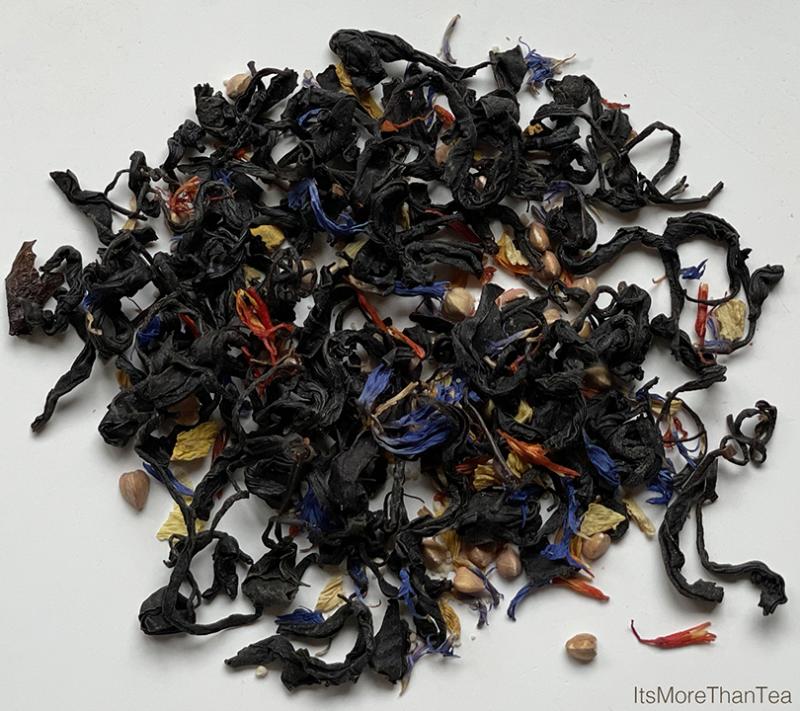Tea can evoke many things – a memory, a tradition, the essence of a country. Just the words "English breakfast" immediately conjure up a complete picture of participants, setting, teapot and type of tea.
So too Слава Україні (Glory to Ukraine!), a new tea blended by tea sommelier Lisa McDonald, owner of TeaHaus in Ann Arbor, Mich.
When Lisa began blending this tea – a tribute to a country that holds deep meaning for her family – she selected ingredients that have special significance for Ukrainians. As Lisa explains:
“Many Ukrainian traditions involve buckwheat, and many recipes include honey, so I knew that these two ingredients would be very important to my tea blend – a blend that I made to support my husband's family and the rest of the Ukrainian people.”
Wild-grown Black Tea from the Caucasus Mountains
For the base tea, Lisa decided on leaves that have been plucked from wild-growing tea shrubs in the country of Georgia, which also borders the Black Sea, southeast of Ukraine. This lower latitude is enough to make Georgia conducive to growing tea, whereas Ukraine’s climate is too harsh, although there is one experimental farm there.
Located on the edge of Ukraine’s southwest border, the Mt. Zhornia Tea Plantation was first planted in 1949 but was largely destroyed over the years. Currently, Maksym Malyhin is managing the several hundred plants that have survived, and some oolong has been produced.

Sunflower Petals
An unofficial national symbol, sunflowers have long been part of Ukrainian culture, although they are actually native to the Americas. It was probably the Spanish who brought the plant back home with them in the 1500s as a curiosity, with the flower reaching Ukraine in the mid-1700s. First grown for its bloom, its potential for oil was quickly realized; sunflower oil was produced on a commercial scale in Russia by the early 1800s.
Today, Ukraine cultivates ornamental sunflowers along with four commercial varieties, producing 19 percent of the world’s sunflowers – which yield vegetable oil, fodder, fertilizer, potash and edible seeds.
The petals are used in many tea blends, with their sunny yellow adding visual interest and the petals themselves lending some creaminess to the tea. With the current interest in herbal tisanes, researchers are calculating how to best cultivate and harvest sunflowers for their blooms rather than their seeds. The process is quite involved. For example, one study evaluated “frequency distribution of sunflower head diameter, number of petals of each head, length, width, unit mass, and projected area of the petals” of various varieties (Mirzabe et al. 2018)!
The significance of sunflowers to Ukraine can't be overstated – the bright yellow of the country's flag represents a field of sunflowers against a vivid blue sky.
Blue Cornflower Petals
With sunflower petals in the mix, Lisa added blue cornflower petals to represent that blue sky. Native to Ukraine, cornflowers lend not only bright color but they, like sunflowers, impart creaminess to the tea.
Cornflowers owe their blue color to a plant pigment and flavonoid called anthocyanin. The color of anthocyanin depends on the pH condition:
- Alkaline: blue (e.g., cornflowers, chicory, blueberries)
- Neutral: purple (e.g., violet, lavender, purple potato)
- Acidic: red (e.g., hibiscus, red roses, red raspberries, red cabbage)
These pigments are heavily studied because they are antioxidants, with multiple potential medical applications (diabetes, cancer, inflammatory and cardiovascular diseases, weight control, neuroprotection, microbial infections; Khoo et al. 2017).

Buckwheat
Called the “Bread Basket of Europe,” Ukraine is the third-largest buckwheat producer globally. This gluten-free pseudocereal is widely consumed in Ukraine and Russia and is part of many traditional recipes. Although it seems like a grain, buckwheat is actually a fruit, and is both extremely nutritious and very filling.
The name “buckwheat” came from Middle Dutch boecweite, “beech wheat,” because the grains are shaped like beechnuts. The plant itself, however, originated in North or East Asia and has been grown in China since 1000 BCE (Li and Zhang 2010).
Buckwheat grows well in harsh environments with short growing seasons, and isn't bothered with poor soil. Ongoing studies are investigating the potential of buckwheat’s flavonoids and antioxidant properties in addition to its further development as a “functional food.” (According to the Mayo Clinic, that refers to foods such as oatmeal, which “have a potentially positive effect on health beyond basic nutrition.”)

Honey
Fields of blooming white buckwheat flowers attract honeybees that produce a dark and complex honey from the nectar. The bees visit the vast fields of sunflowers as well, although sunflower honey crystallizes more quickly than other types and therefore has less market value.
Still, with acres of blooming flowers, millions of beekeepers take advantage of the opportunity. Ukrainians eat a lot of honey (40,000 tons in 2016) and they export a sizable amount to the European Union and North America (57,000 tons in 2016) (Hydzik 2017).
Traditionally, when a person gets married, the wedding cake is made from buckwheat provided by one family and honey provided by the other family.
The Tea
Слава Україні tea (pronounced slav-aaaah oooh-cry-eee-knee) is currently available as a sample at TeaHaus.
Visually, it's an appealing blend, with long and wiry Wild Caucasus Mountain black tea leaves generously sprinkled with sunflower petals, blue cornflower petals, buckwheat and honey granules.

Brewed for four minutes with boiling water, the intact tea leaves open up, yielding a yellowish copper cup. The aroma is that of a classic light black tea, with a subtle hint of honey.
The honey granules nicely accentuate the black tea’s natural honey note, but not overtly so. The petals add creaminess while the buckwheat lends some nuttiness. You get a bit of vegetal in the mix.

Lisa notes that this tea would be nice with lemon or, if you like a sweeter tea, a bit of local honey. She also suggests enjoying this tea with a slice of traditional Ukrainian honey cake, poppyseed cake, or Easter babka.
If you'd like to give this tea a try, order it at TeaHaus; all proceeds go to humanitarian aid in Ukraine. Дякую (Dyakuyu, thank you).
Jill Rheinheimer draws on her deep background in scientific research and written communication to make tea-related research and history accessible to a general audience. She began her career in cell biology research labs, eventually moving into archaeology and anthropology as editor and publisher of scholarly monographs, while freelancing as editor, writer and book designer. Rheinheimer brings a love for research and photography, attention to detail and deep appreciation for the world of tea to her blog, It’s More Than Tea, and her work at TeaHaus in Ann Arbor, Mich.
Lisa McDonald’s TeaHaus – a loose-leaf tea store and café – opened in Ann Arbor in 2007. Emphasizing education and community outreach, TeaHaus holds tastings, pairing events and other programs, collaborating with distilleries, tea growers, artists and more. McDonald also owns Eat More Tea, which sells tea-based spice blends for the everyday chef.
To learn more, visit TeaHaus.com and EatMoreTea.com.
Sources:
–Donaldson, B., "Tea in Ukraine," T Ching, 3/4/22.
–Hydzik, J., "Ukraine honey exports," Bee Culture, 11/15/17.
–Khoo, H. E., et al., "Anthocyanidins and anthocyanins," Food and Nutrition Research 61(1). 2017.
–Land, L., "Grain of the Ukraine," Yoga International, accessed 3/29/22.–Li, S.-Q. and W. H. Zhang, "Advances in the development of functional foods from buckwheat," Critical Reviews in Food Science and Nutrition 41(6). 2001.
–Zeratsky, K., Nutrition and Healthy Eating, Mayo Clinic, 6/27/20.
Plan to Attend or Participate in the
World Tea Conference + Expo, March 27-29, 2023
To learn about other key developments, trends, issues, hot topics and products within the global tea community, plan to attend the World Tea Conference + Expo, March 27-29, 2023 in Las Vegas, co-located with Bar & Restaurant Expo. Visit WorldTeaExpo.com.
To book your sponsorship or exhibit space at the World Tea Conference + Expo, contact:
Veronica Gonnello
(for companies A to G)
e: [email protected]
p: 212-895-8244
Tim Schultz
(for companies H to Q)
e: [email protected]
p: (917) 258-8589
Fadi Alsayegh(for companies R to Z)
e: [email protected]
p: 917-258-5174
Also, be sure to stay connected with the World Tea Conference + Expo on social media for details and insights about the event. Follow us on Twitter, Facebook, Instagram and LinkedIn.
